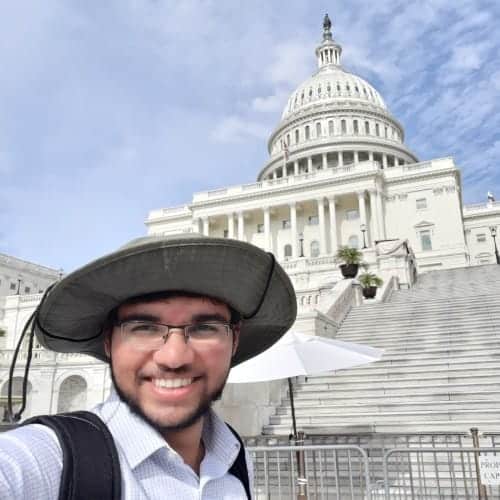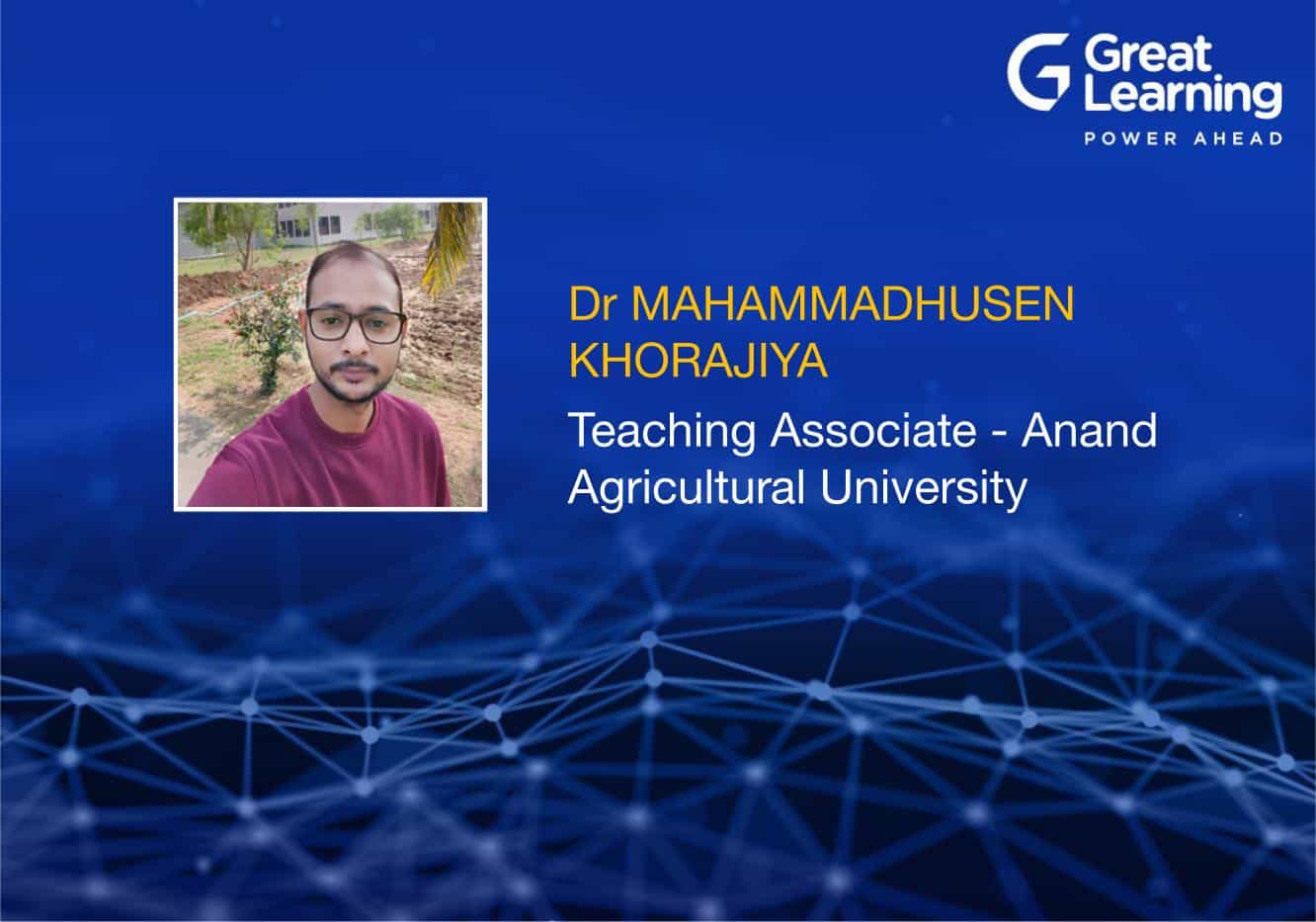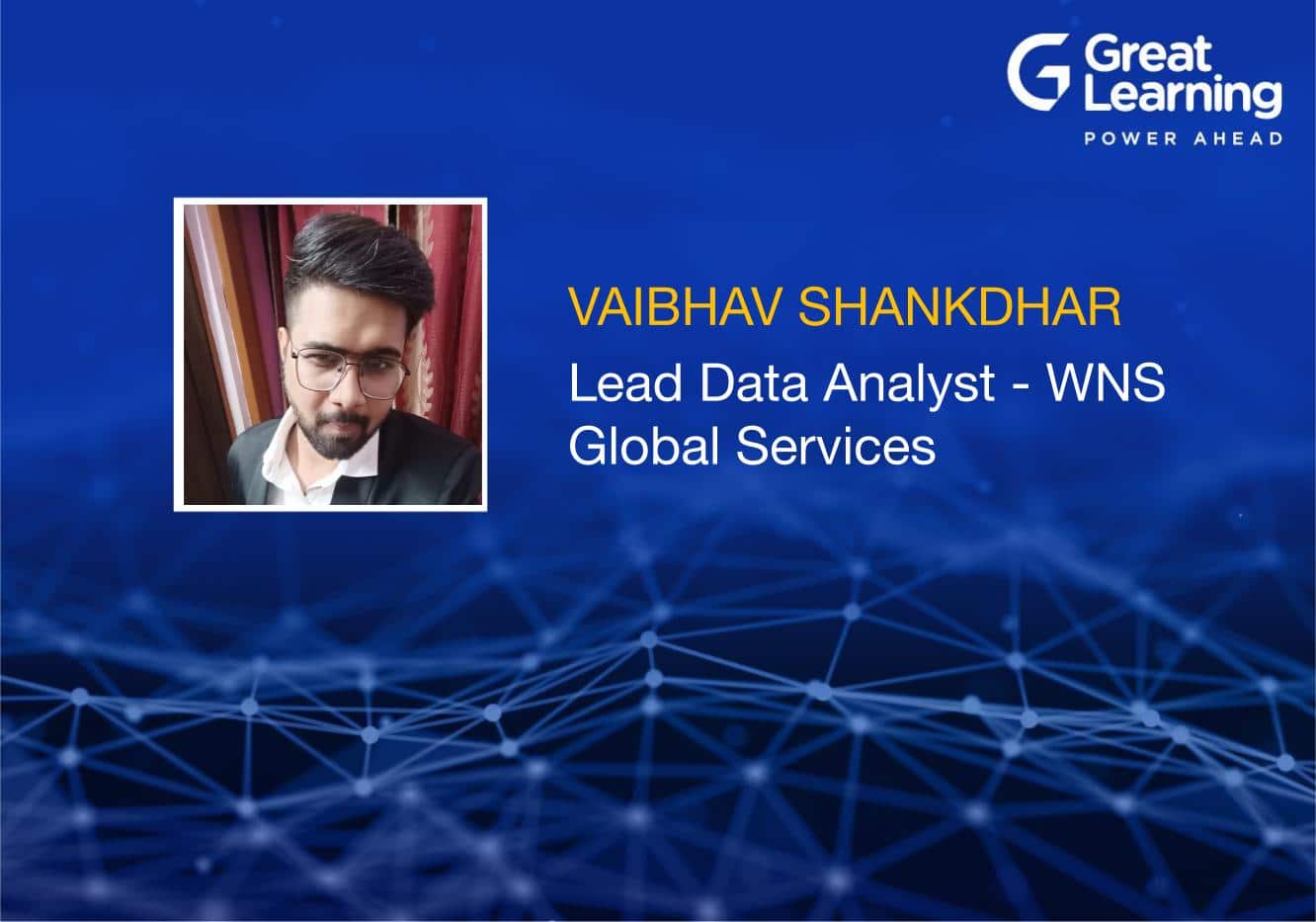
My name is Sankar Giri R. Getting into Analytics or Data science stream was never my dream. I got into this out of an accident. Prior to getting into data sciences, I was in multiple roles. The only aim that I had for a very long time was to get into a good MBA program. But everything happens for good. I had worked with organizations such as TATA Consultancy Services, Bank of America, and CITI – Currently working as Vice President (Data Science and Business Analytics/Artificial Intelligence and Machine Learning.
I had 10+ years in the banking and software services industry by then. My career was almost stabilized and I could not see much growth out of it. Hence, I was planning to turn up my dreams of management education. But I was quite apprehensive as my long experience would bar me from getting into a decent MBA. It was when I came to know about the new upcoming stream called Business Analytics. My first step towards getting into analytics was scouting for an opportunity internally. It didn’t work out for me for two reasons. First, there were not many analytics initiatives happening within the companies at that time. Secondly, as the advanced analytics stream evolved as an extension to the business intelligence division in most companies (especially the Information technology services), they could not afford to take a non-BI person like me and train up for their analytics work. Also, there were not many courses online at that time. Or perhaps, I was not aware. Then I did R&D regarding the institutions which provide the DSBA diploma/certification. I found Great Learning the most attractive and trustworthy partner among the competition.
GL has helped me in providing consistent support and their material is so good that when I started my journey, my interest to be a Data Scientist got multiplied by 100. During my learning, I started applying Data Science in the Banking sector in order to test my skills and it helped the organization in order to refurbish the ongoing facilities which are there in the market.
Below are the models to which I have contributed to my organization:
1. Fraud detection and prevention – Every year financial institutions are spending billions against fraud detection applications, as it may hurt the company’s brand and reputation. Data science plays a key role in collecting, summarizing, and predicting the customer database to detect fraudulent activities. Analysis of customer records to drive accurate information is not possible before the existence of data science/big
data. AI and Machine learning can help banks combat fraudulent activities. For example, data models can be built for analyzing credit card frauds that provide data intelligence and classify legit or fraudulent transactions, based on details like purchase amount, location, merchant, time, and other parameters.
2. Risk Management – Risk management in banks has changed substantially in the last decade as new threats emerge. The regulations have also gone stricter post-global financial crisis. The adoption of data science is enabling new risk, management models. Machine learning technologies can identify complex, nonlinear patterns in large volumes of data and help create models with higher accuracy. These data models also self-learn every bit of every data and pattern to improve their predictive power with time.
3. Customer Data Analysis – Banks are collecting large amounts of data from consumers. Analyzing these datasets is possible with data science technologies. Based on the information collected through social media, customer surveys, and data from other touchpoints, the banks can understand customer sentiment. Machine learning and data science can deconstruct these data sets easily and provide deep data intelligence on customers’ needs, wants, and perceptions of the bank.
4. Marketing & Sales – The key to success in marketing is to customize an offer that suits particular customer preferences and needs. Data science in banking can help create a personalized window for every customer, by dividing the data into demographical, geographical, and historical data sets. These datasets provide deeper insights into how a customer responds to an offer/promotion. Therefore, banks can make personalized outreach to interact with customers. Machine learning helps in creating powerful recommendation engines that can create upsell/cross-sell opportunities for banks.
In short, these 4 given techniques which are mentioned above are being used for a long time and after completing this DSBA course I have contributed my participation in improving these models. There are various CRM tools that are being used to take care of leads in the organization and after applying Machine Learning, SQL and Python, we are able to take care of Marketing & sales figures more precisely. The number of sales has increased to 30% more than what was there previously as no lead is getting wasted now.
We are now able to maintain customer data and analyze it very precisely. Data leakage and attrition have dropped tremendously. The percentage has dropped 5% from the previous 9% in total. If I talk about Fraud Detection & prevention, the applications like FORTER and Experian Hunter were helping us to keep a check on the number of safe accounts. But when I applied my skills along with these applications, I am able to increase the safety measures and protect accounts. DSBA has served as a boon to me, it has helped me to reach my goal.
Previously, CITI bank India was serving 2.7 million retail customers with 1.2 million bank accounts. Now the number has increased to 3 million retail customers with 1.5 million bank accounts. This is a huge achievement for us in a very shorter period of time. At last, I would like to thank Great Learning for a wonderful experience and learning. Keep growing and keep spreading education.






